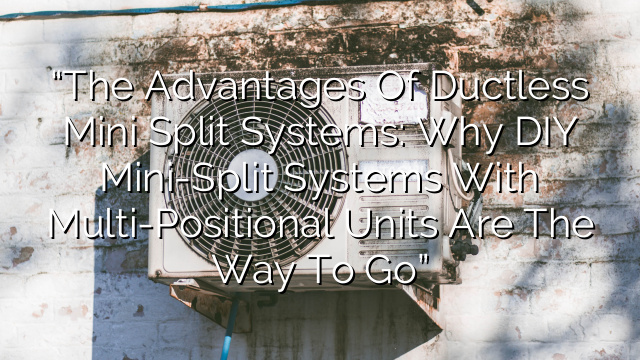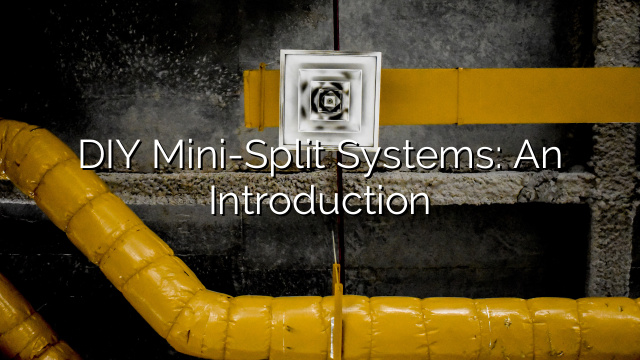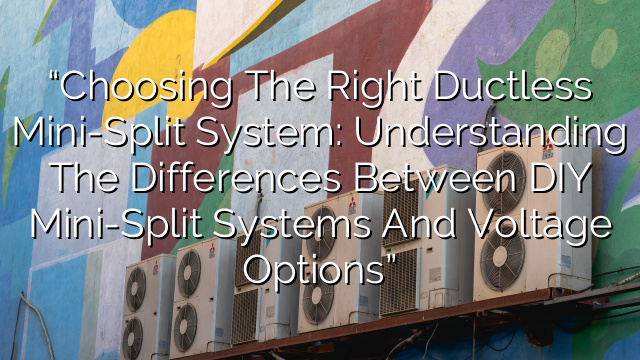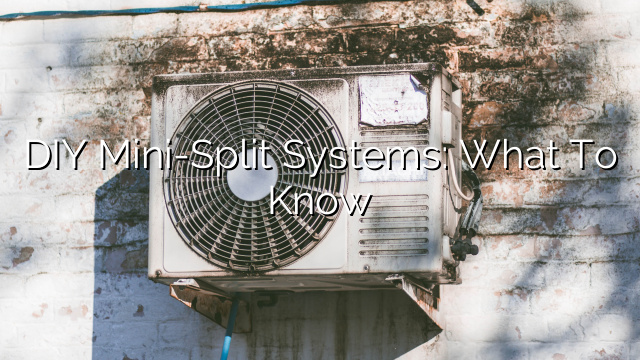Ductless Mini Split
A ductless mini split is a type of HVAC system that provides both heating and cooling without the need for ductwork. It is an energy-efficient and cost-effective alternative to traditional central air conditioning systems.
DIY Mini-Split Systems
DIY mini-split systems are designed for easy installation by homeowners, allowing them to save money on installation costs. These systems come with detailed instructions and everything needed to complete the installation process.
Mini-Split Type: Wall Mounted, Ceiling Cassette, Multi-Positional
There are different types of ductless mini-splits available, including wall-mounted, ceiling cassette, and multi-positional systems. Each type offers unique benefits and is suitable for different applications.
- Wall Mounted Mini Splits
- Wall-mounted mini splits are the most common type of ductless mini-split systems. These units are mounted on the wall and provide both heating and cooling to the room. They are compact and aesthetically pleasing, with various design options to match any decor.
- Ceiling Cassette Mini Splits
- Ceiling cassette mini splits are installed in the ceiling and provide 360-degree airflow. They are an excellent choice for larger rooms or spaces with limited wall space. These units are discreet and blend seamlessly into the ceiling.
- Multi-Positional Mini Splits
- Multi-positional mini splits are versatile systems that can be installed on the wall, ceiling, or floor. They are ideal when there are limited installation options or when the design of the room requires flexibility.
The Ultimate Guide to Ductless Mini Splits
Wall Mounted, Ceiling Cassette, and Multi-Positional DIY Systems
If you are considering installing a ductless mini-split system in your home, this ultimate guide will provide you with all the information you need to make an informed decision.
Benefits of Ductless Mini Splits
Ductless mini splits offer several advantages over traditional HVAC systems:
- Energy efficiency: Ductless systems use less energy and are more efficient than central air conditioners, reducing your energy bills.
- Easy installation: DIY mini-split systems are designed for easy installation, saving you time and money on professional installation.
- Zoned cooling and heating: Mini splits allow you to control the temperature independently in each room or zone, increasing comfort and energy savings.
- Improved air quality: Ductless systems have advanced filtration capabilities, removing dust, allergens, and other pollutants from the air.
- Quiet operation: Mini splits are known for their quiet operation, providing you with a peaceful and comfortable environment.
Choosing the Right Mini Split
When selecting a ductless mini-split system, you need to consider the following factors:
- Size and capacity: Choose a system that matches the size and cooling/heating requirements of your space.
- Type: Decide on the type of mini-split system that best suits your needs (wall mounted, ceiling cassette, or multi-positional).
- Brand and quality: Select a reputable brand with good customer reviews and reliable performance.
- Energy efficiency: Look for Energy Star rated systems that offer energy savings and reduce your environmental impact.
- Features: Consider additional features such as smart capabilities, remote control, or built-in air purifiers.
Installation Process
Installing a ductless mini-split system can be done by following these general steps:
- Plan the installation: Determine the best location for the indoor and outdoor units and ensure proper spacing requirements.
- Mount the indoor unit: Install the indoor unit on the wall, ceiling, or floor, following the manufacturer’s instructions.
- Connect the refrigerant lines: Attach the refrigerant lines, drain line, and electrical connections between the indoor and outdoor units.
- Mount the outdoor unit: Install the outdoor unit on a stable surface, making sure it is level and securely anchored.
- Complete the electrical connections: Connect the electrical wires to the outdoor unit and ensure they are properly grounded.
- Vacuum and charge the system: Evacuate any air or moisture from the refrigerant lines and charge the system with refrigerant.
- Test the system: Perform a test run to ensure the system is operating correctly and check for any leaks or issues.
- Finalize the installation: Seal any openings, insulate the refrigerant lines, and test the system performance.
Maintenance and Care
To keep your ductless mini-split system running efficiently, follow these maintenance tips:
- Clean or replace air filters regularly to maintain optimal airflow and prevent dust buildup.
- Clean the indoor and outdoor units to remove dirt, debris, and leaves that can restrict airflow.
- Check the refrigerant levels and connections to ensure there are no leaks or issues.
- Inspect the drain line and remove any clogs or obstructions to prevent water damage.
- Keep the outdoor unit clear of vegetation and debris to maximize airflow and prevent overheating.
- Schedule professional maintenance at least once a year to ensure proper system performance and identify potential problems.
FAQs
Here are some frequently asked questions about ductless mini-split systems:
- 1. How long do ductless mini-split systems last?
- Ductless mini splits have an average lifespan of 15-20 years with proper maintenance.
- 2. Can I install a ductless mini-split system myself?
- Yes, many DIY mini-split systems are designed for easy installation, allowing homeowners to save money on professional installation.
- 3. Are ductless mini splits more energy-efficient than central air conditioning systems?
- Yes, ductless mini splits are more energy-efficient because they do not have ductwork, which can lead to energy loss.
- 4. Can a ductless mini-split system provide heating in addition to cooling?
- Yes, ductless mini splits are designed to provide both heating and cooling, making them suitable for year-round comfort.
- 5. Are ductless mini splits noisy?
- No, ductless mini splits are known for their quiet operation, providing a peaceful and comfortable environment.
- 6. Do ductless mini splits require regular maintenance?
- Yes, regular maintenance is essential to keep ductless mini splits running efficiently and prolong their lifespan.














